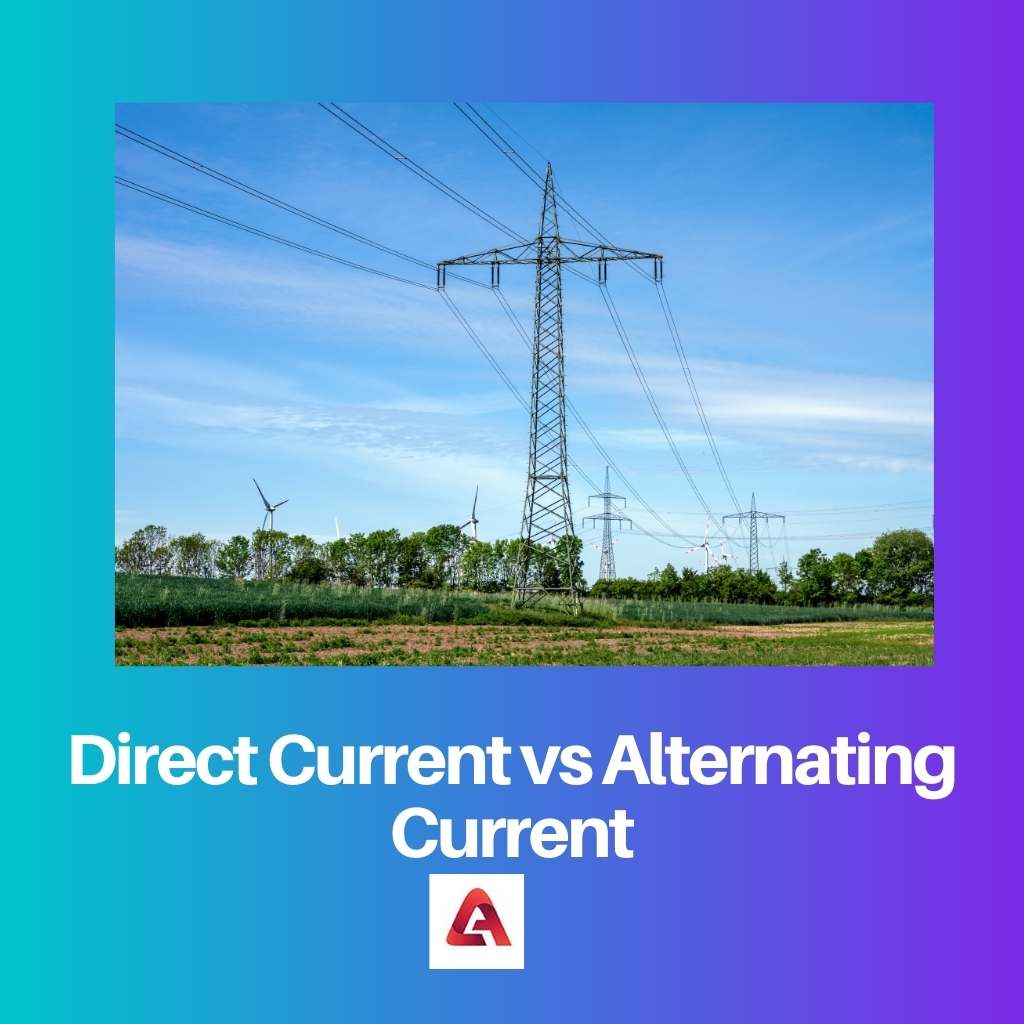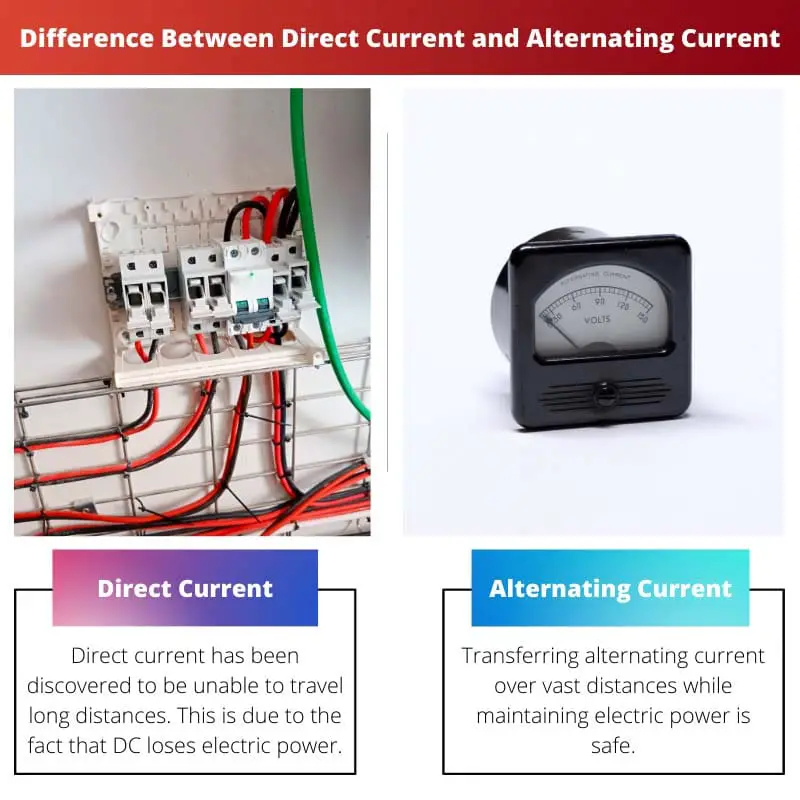We require electricity to power all of our electronic devices. This is produced by power generation stations and provided to us in various forms. Electric current is divided into two types: direct and alternating. There are some substantial distinctions, and those variations are enabling some fascinating applications, particularly in light of the current state of energy awareness. This article will highlight every minor distinction between the various types of currents and their practical applications.
Key Takeaways
- Direct current flows in a single, constant direction.
- Alternating current reverses direction periodically, following a sinusoidal waveform.
- Both current types have distinct advantages, with AC being the standard for power transmission and distribution.
Direct Current vs Alternating Current
The difference between direct current and alternating current is that in an alternating current, the current switches orientations — forward as well as backward – on a regular basis, whereas, in direct current, it runs in a specific direction and is constant. In direct current, electrons move in a specific direction, but in alternating current, electrons swap orientations, moving ahead and then backward.

Direct current (DC) is a one-way electrically charged flow. An excellent illustration of DC power is an electrochemical technique in a cell. Direct current flows via a wire, but it can also travel via semiconductors, resistors, or even a vacuum, as in energetic electron streams. Electric current is distinguished from dc power by the fact that it travels in a consistent direction. Galvanic current used to be a word for this sort of current.
AC stands for alternating current, which is a movement of electrons that alternates regularly. It begins at zero, increases to a peak, declines to zero, flips, reaches its peak in the other way, returns to the initial number, and so on. The period is an important gap between the accomplishment of a specific value on two consecutive cycles.
Comparison Table
| Parameters of Comparison | Direct Current | Alternating Current |
|---|---|---|
| Travel Distance | Direct current has been discovered to be unable to travel long distances. This is due to the fact that DC loses electric power. | Transferring alternating current over vast distances while maintaining electric power is safe. It is capable of travelling from one city to another without difficulty. |
| Electron Flow | Electrons move in forward direction only in direct current. | Electrons switch from forward to backward. |
| Types | It is a pure and singular type. No additional types of direct current exists. | Sinusoidal current is the most common form of AC current. Triangular and rectangular shape trapezoidal are two further forms. |
| Energy Loss | High energy loss occurs in direct current. | The energy loss during AC power transfer is minimal. |
| Frequencies | Nil frequency. | The alternating current’s frequency is somewhere around 50 and 60 Hz. |
What is Direct Current?
DC stands for direct current, which means that the flow of electricity does not change direction. As a result, the main difference between these two currents is that with direct current, the electrical charge travels only in one way at a constant voltage.
One of the most common uses of DC is to create electricity and supply power gadgets. Electrons arise from the DC circuit’s downside and flow towards the bright side. Solar panels, capacitors, and electrochemical cells are the primary sources of DC.
Contrary to alternating current, direct current does not have a regular flow. Current electricity has a particular direction of flow and a constant voltage. DC is mostly used to power electronic systems as well as to charge batteries. Cell phone batteries, torches, flat-screen televisions, and electric cars are just a few examples. DC is made up of a plus but also minus sign, as well as a dashed or continuous line.
Even though direct current has not been used at consuming sites, it is nonetheless employed to carry energy across vast distances (electrical receptacles in most locations). It is switched back to AC upon approaching the consumption point after transmission.
What is Alternating Current?
The alternating current had a significant advantage over the direct current (DC; a continuous flow of electrical charges on one side) in that it could transport transmission lines with little transmission losses due to resistance. The power communicated is equal to the current multiplied by the voltage, whereas the power wasted is equivalent to the value multiplied by the current squared.
Switching voltages was exceptionally hard with the early DC electricity generation networks in the late 1800s. Due to the obvious power loss, such grids had to utilize low voltages to ensure a constant current, limiting their ability to transmit usable power over small distances.
In alternating current, the stream of electric charges reverses course on a regular basis. AC is the most utilized and preferred electric power for domestic appliances, offices, and structures. It was initially tested in 1832 using a Dynamo Electrical Converter, relying on Michael Faraday’s concepts. A sine wave is a waveform that represents alternating electricity. To put it another way, it’s known as the curved line.
Main Differences Between Direct Current and Alternating Current
- Channelizing and generation of direct current are expensive compared to alternating current.
- Power loss occurs significantly in direct current, whereas no energy loss is observed in alternating current.
- Direct current flows in a specific direction with steady magnetism, but alternating current flows in a different direction with a spinning magnet.
- The frequency of the direct current is zero, but the frequency of the alternating current is 50 to 60 hertz.
- Although direct current can’t go very far, alternating current may be employed for extensive transfers.






